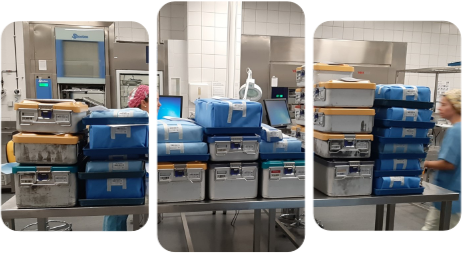After sterilization or disinfection, Reusable Medical Device (RMD) may be immediately used or stored until use.
- Critical sterile RMD’s are protected from environmental and handling contamination by packaging and may be stored under controlled conditions until use or expiry date (see below, storage of sterile items).
- Semi-critical RMD’s may be temporarily stored under controlled conditions. Maximum time before use is defined by local regulation (commonly from 3 to 12 hours). If the time limit is exceeded, RMD’s must be reprocessed. See flexible endoscopes.
- Storage of non-critical RMD is according to internal policies.


